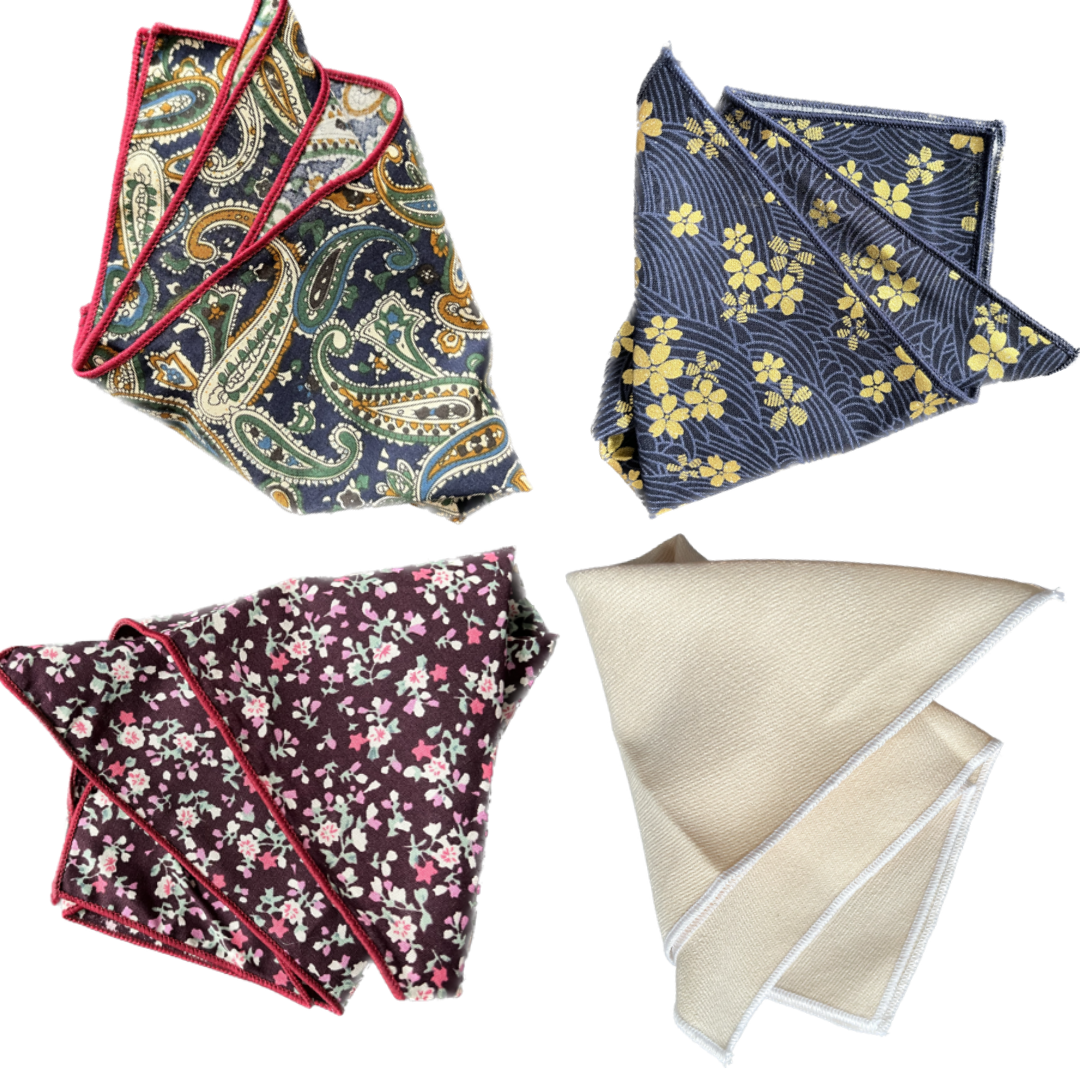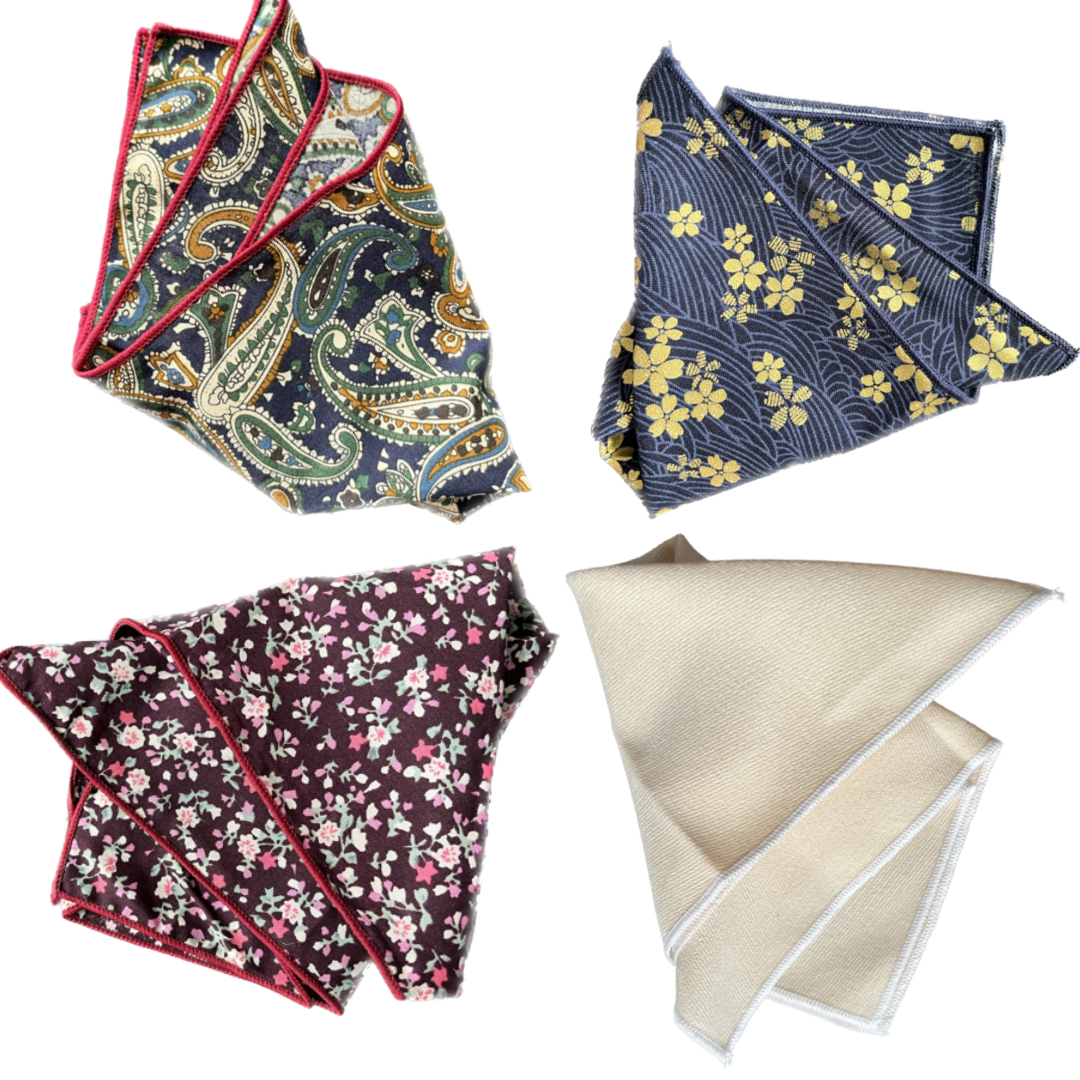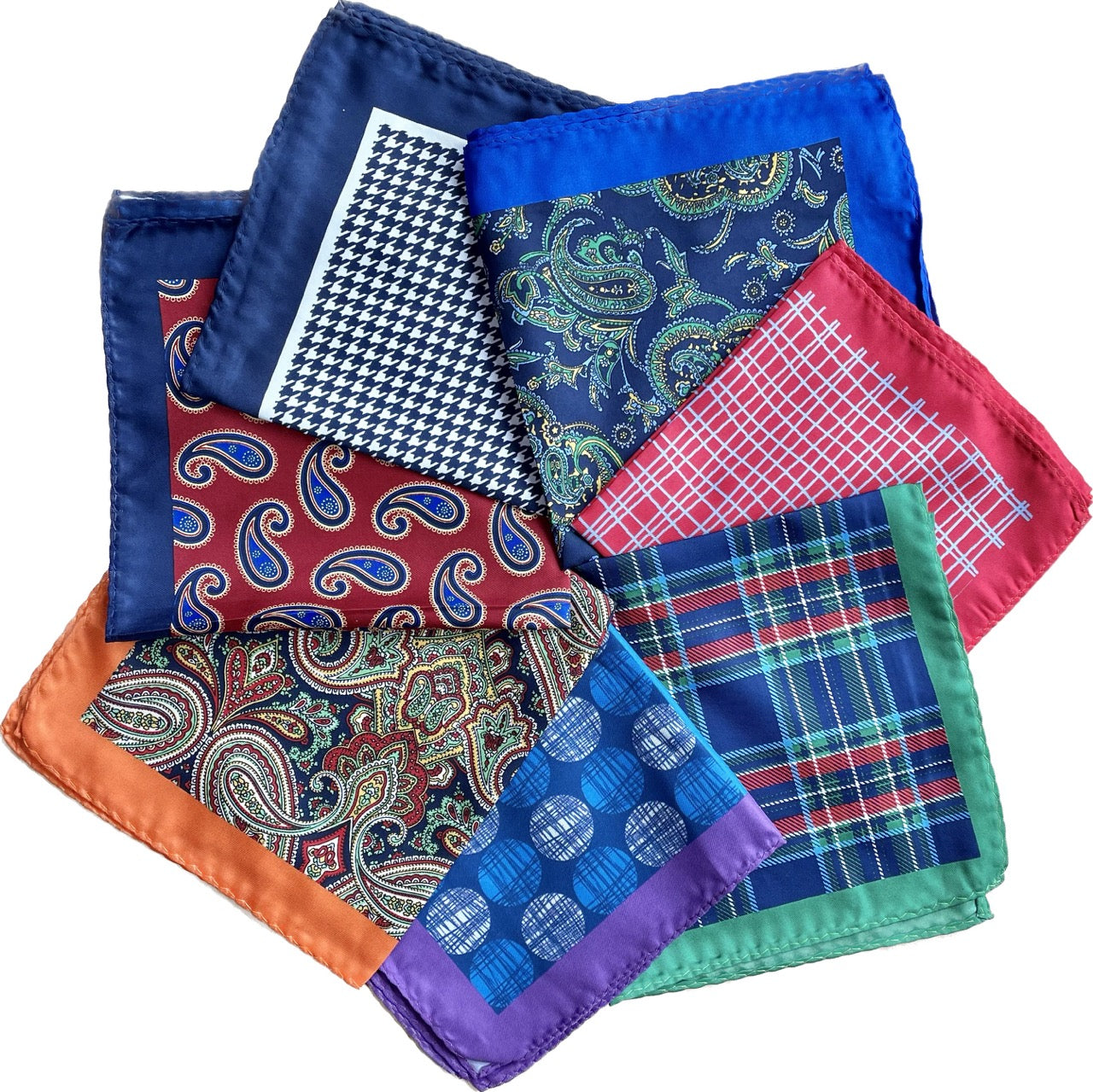
The History of the Pocket Square
Ancient Origins
The origin of the pocket square isn't universally accepted in antiquity, but we can trace evidence of it back to Ancient Egypt and Ancient Greece. The archaeological evidence is somewhat spotty when it comes to evidence of Ancient Egyptians dying small swatches of linen cloth for use as a fashionable accessory. We do know that most kingdoms of Ancient Egypt had rich cultural customs and traditions associated with fashion, jewelry, dyes, and sumptuous fabrics. It follows that the use of rich dyes and textile swatches could have highlighted affluence and wealth displayed through fashion.
However, there is more concrete evidence of the precursor to the modern pocket square in Ancient Greece. Pieces of cloth were sweetly perfumed and worn on the body to carry with them a pleasant scent (and to possibly mask not-so-pleasant smells).
Another theory of the origin of the modern pocket square is the evolution from practical handkerchief to fashionable accessory. Handkerchiefs date back to possibly 800 AD, although they became more popular across Europe in the 1400s. Before we had soft disposable tissues, people used a small washable cloth known as the handkerchief. Handkerchiefs were then much less about fashion and more about function. The word handkerchief is actually an anglicized version of "kerchief," which is derived from two French words: couvrir (to cover) and chef (head). These cloths were used to wipe all manner of facial fluids from your head.
While this may not be a straight line from antiquity to modern fashion accessory, it paints a somewhat romantic evolution (other than perhaps the visual of facial fluids) of the ancient origins of this modest cloth.
The Gentleman's Suit
Out of antiquity comes the modern menswear paradigm of the gentleman's suit. This brings us to the 19th century when the mainstay of menswear fashion became the two-piece suit. As legend has it, the pocket handkerchief was moved to the breast pocket in an effort to keep it separate from other pocket dwellers, such as coins and paper money.
Perhaps in a move to individualize the standard suit, the handkerchief kept in the breast pocket became a statement of personal flair and good sense. Beautifully embroidered linen and silk pocket squares came into existence as a subtle shift from function to fashion in the 20th century. To further individualize and accessorize mainstay suits, various folding patterns and colour pairings cemented the modern menswear accessory of the pocket square.
Fashionable Accessories
With the subtle renaissance of the pocket square more recently seen in high-end formal menswear, the pocket square is making a comeback as a mainstay of gentlemen's fashion. It is no longer reserved strictly for formal occasions and wedding parties; it completes any and all outfits worn by the sartorially-minded gentleman.
Consider the wardrobe versatility you can very simply achieve with even a few well-paired accessories such as coordinating ties and pocket squares. The same suit can achieve a vastly different look and textured feel, depending on occasion and mood. A sumptuous silk pocket square in vibrant and rich colours paired with a regally embossed tie for a powerful flair, or an earthen larger weave linen pocket square paired with a dark-hued knit tie.
Modern pocket squares add economical depth and versatility to your gentleman's wardrobe while highlighting your good sense and personal flair.






